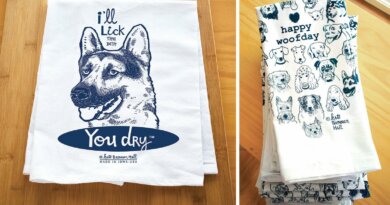What are Hazard Analysis and Risk-Based Preventive Controls? – Truth about Pet Food
On July 6th, 2022 the FDA announced they had finalized the Food Safety Modernization Act Guidance document on Hazard Analysis and Preventive Controls for Animal Food. To explain this guidance document, a bit of background information…
The Food Safety Modernization Act (FSMA – acronym pronunciation: fizz-ma) are ‘food safety’ laws that were published in 2011. FSMA requires human food and animal food producers to have written food safety procedures in place, requiring manufacturers to document in writing potential food safety risks (hazards) and document in writing all steps they take to prevent those risks from occurring (preventive controls). There are separate Hazard Analysis and Preventive Controls for human food and animal food.
The document FDA just released is focusing on preventive controls for animal foods. Pet food/animal food manufacturers are not only required to document all hazards and implement preventive measures for those hazards, they are also required to verify this animal food safety plan is effective.
The guidance document states “To implement your preventive control, you are required to conduct several verification activities as appropriate to the nature of the preventive control and its role in your facility’s food safety system. Your verification activities must be documented in records.” In other words, in writing each pet food/animal food manufacturer must document that all of their hazard prevention methods actually work – are effective.
It all sounds simple and great in theory – determine all hazards and implement verified measures to prevent them, but…
Federal law or the FDA does not tell the animal food industry exactly what hazards are. The decision to acknowledge a hazard is left up to the discretion of each animal food manufacturer. But, the guidance document tries to point out some obvious hazards and, in some cases, makes half-hearted suggestions on how to prevent them.
Such as: the new FDA guidance document states “Many slaughter products not used in human food (e.g., not fit for human consumption for various reasons) are used in animal food. Animal food derived from meat, organs (e.g., liver, kidney, heart, brain, and thymus), fat, or skin may contain drug residues.”
The FDA acknowledges that not fit for human consumption slaughter products commonly used in pet food/animal food are of risk for drug residues. The agency tells industry that these drug residues such as antibiotics and pentobarbital “should be identified as a known or reasonably foreseeable hazard” for facilities that salvage “tissues from animals that died other than by slaughter”. But, as preventive control the agency ONLY tells industry to “determine whether animals have been euthanized using pentobarbital and, if so, exclude those animals from use as animal food.”
This FDA suggested preventive approach isn’t even close to a reasonable prevention method. A mound of dead animal carcasses or carcass parts dumped at a rendering facility give no clues if they contain pentobarbital or antibiotics or any other drug residue. The only way to “determine whether animals have been euthanized using pentobarbital” would be to test each and every carcass and carcass part prior to processing as an ingredient. It would be an impossible task. The same testing preventive control (testing each carcass and carcass part) would need to take place for any other drug residues as well.
And just because a pet food manufacturer has written hazard analysis and preventive controls as law requires, doesn’t mean they are following their own prevention plan. As example, the FDA November 2019 Warning Letter to Hill’s Pet Food stated this pet food manufacturer violated these federal law requirements (regarding the excess vitamin D recalls). Quoting: “Furthermore, the inspection revealed violations of FDA’s Hazard Analysis and Risk-Based Preventive Controls requirements for animal food found in Title 21 of the Code of Federal Regulations, part 507, subpart C.”
For those that wish to better understand the safety requirements of pet food manufacturing, the guidance document is good to read and easier to understand than the actual laws. Understanding the laws that govern pet food enables you to ask more informed questions to your pet food manufacturer – as well as a bit of understanding what manufacturers that are abiding by all laws have to go through. The guidance document can be read here, click on the blue “Download the Final Guidance Document” link.
Wishing you and your pet the best –
Susan Thixton
Pet Food Safety Advocate
TruthaboutPetFood.com
Association for Truth in Pet Food

Become a member of our pet food consumer Association. Association for Truth in Pet Food is a a stakeholder organization representing the voice of pet food consumers at AAFCO and with FDA. Your membership helps representatives attend meetings and voice consumer concerns with regulatory authorities. Click Here to learn more.
What’s in Your Pet’s Food?
Is your dog or cat eating risk ingredients? Chinese imports? Petsumer Report tells the ‘rest of the story’ on over 5,000 cat foods, dog foods, and pet treats. 30 Day Satisfaction Guarantee. Click Here to preview Petsumer Report. www.PetsumerReport.com
Find Healthy Pet Foods in Your Area Click Here

The 2022 List
Susan’s List of trusted pet foods. Click Here to learn more.




